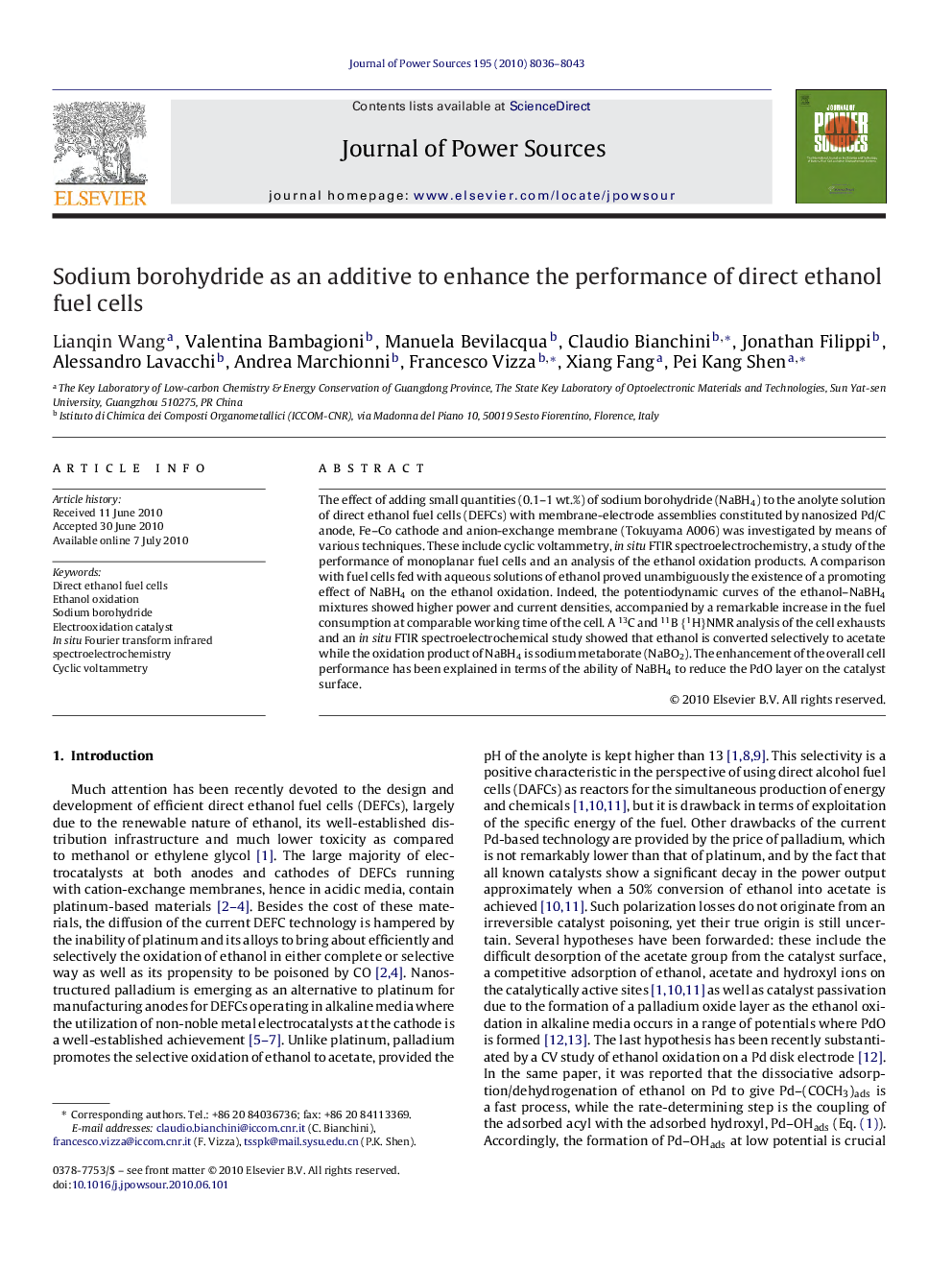| Article ID | Journal | Published Year | Pages | File Type |
|---|---|---|---|---|
| 1293649 | Journal of Power Sources | 2010 | 8 Pages |
The effect of adding small quantities (0.1–1 wt.%) of sodium borohydride (NaBH4) to the anolyte solution of direct ethanol fuel cells (DEFCs) with membrane-electrode assemblies constituted by nanosized Pd/C anode, Fe–Co cathode and anion-exchange membrane (Tokuyama A006) was investigated by means of various techniques. These include cyclic voltammetry, in situ FTIR spectroelectrochemistry, a study of the performance of monoplanar fuel cells and an analysis of the ethanol oxidation products. A comparison with fuel cells fed with aqueous solutions of ethanol proved unambiguously the existence of a promoting effect of NaBH4 on the ethanol oxidation. Indeed, the potentiodynamic curves of the ethanol–NaBH4 mixtures showed higher power and current densities, accompanied by a remarkable increase in the fuel consumption at comparable working time of the cell. A 13C and 11B {1H}NMR analysis of the cell exhausts and an in situ FTIR spectroelectrochemical study showed that ethanol is converted selectively to acetate while the oxidation product of NaBH4 is sodium metaborate (NaBO2). The enhancement of the overall cell performance has been explained in terms of the ability of NaBH4 to reduce the PdO layer on the catalyst surface.
